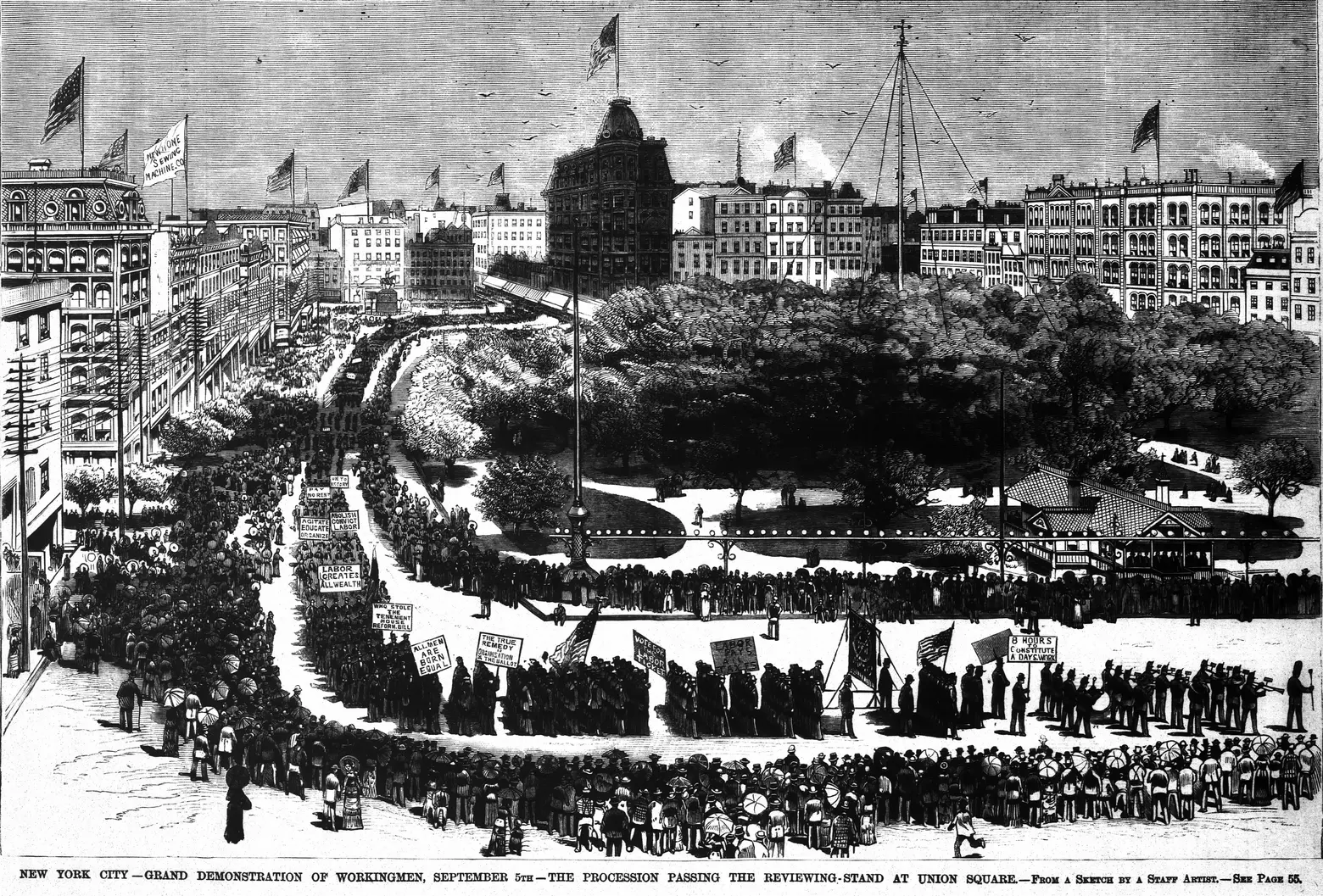Antwort Who lived in New York first? Weitere Antworten – Who first lived in New York
The first peoples of New York are estimated to have arrived around 10,000 BC. Around AD 800, Iroquois ancestors moved into the area from the Appalachian region. The people of the Point Peninsula complex were the predecessors of the Algonquian peoples of New York.Giovanni da Verrazzano
The written history of New York City began with the first European explorer, the Italian Giovanni da Verrazzano in 1524. European settlement began with the Dutch in 1608 and New Amsterdam was founded in 1624.the Dutch
In 1664, the English took possession of New Netherland from the Dutch, renaming it New York.
What religion was the colony of New York : Unlike its Puritan counterpart in New England, the Dutch colony never identified itself as a religious state. New Amsterdam counted Jews, Catholics, and members of various Protestant denominations as residents.
Why did Indians sell Manhattan
As related by Russell Shorto in The Island at the Center of the World, the chief, Sackimas, deemed that the Dutch access to Manhattan's resources was a reasonable exchange for a valuable array of European items knives, axes, hoes, awls, cloth, and coats, but probably not beads and the additional promise of support by …
Why did the Dutch settle in New York : Created by William Usselinx, The Dutch West India Company encouraged people to seek land that they considered widely available for Dutch citizens to purchase from the indigenous people. New Netherland had been conceived as a private business venture to exploit the North American fur trade.
The Lenape, Manhattan's original inhabitants, called the island Manahatta, which means “hilly island.” Rich with natural resources, Manahatta had an abundance of fruits, nuts, birds, and animals. Fish and shellfish were plentiful and the ocean was full of seals, whales, and dolphins.
New York City was founded in 1624 by the Dutch as a trading post called New Amsterdam. The city passed into British control in 1664 and was renamed New York after the Duke of York. The city's parts were built over many years and underwent significant changes and development.
Did the Dutch buy Manhattan
A successful Dutch settlement in the colony grew up on the southern tip of Manhattan Island and was christened New Amsterdam. To legitimatize Dutch claims to New Amsterdam, Dutch governor Peter Minuit formally purchased Manhattan from the local tribe from which it derives it name in 1626.The timeline for the Age of Discovery presumably starts with the Vikings. Several timelines assume that Scandinavian Vikings discovered the continent during their maritime explorations of the late 10th century, which later resulted in the Norse colonisation of Greenland and of L'Anse aux Meadows in Newfoundland.The first 31 families arrived in the harbor of the North River in 1623 aboard the “New Netherland,” and by 1624, the colony of “New Amsterdam” began to be formed.
As director of New Netherland
Minuit is credited with purchasing the island of Manhattan from Native Americans in exchange for traded goods valued at 60 guilders.
Did the Dutch buy Manhattan for $24 : Early Manhattan
Hired by the Dutch West India Company to oversee its trading and colonizing activities in the Hudson River region, Minuit is famous for purchasing Manhattan from resident Algonquin Indians for the equivalent of $24.
Was New York originally Dutch : Over two hundred years, the colony of New Netherland became the British colony of New York, which then became the independent state of New York. With independence, Dutch patroonships became English manors and the “feudal” system was abolished.
Who sold Manhattan to the Dutch
Peter Minuit
Lesson Summary. Peter Minuit was the Director of the New Netherland colony in modern-day New York and New Jersey. He is credited with purchasing Manhattan from local Native Americans for 60 German gold coins called guilders, or $24 in American money.
Munsee Lenape
Manhattan was historically part of the Lenapehoking territory inhabited by the Munsee Lenape and Wappinger tribes. There were several Lenape settlements in the area of Manhattan including Sapohanikan, Nechtanc, and Konaande Kongh that were interconnected by a series of trails.Andrew Haswell Green
Andrew Haswell Green (October 6, 1820 – November 13, 1903) was an American lawyer, city planner, and civic leader who was influential in the development of New York City.
Why did the Dutch give up Manhattan : In 1667, the Dutch made a trade deal that seems ridiculous sans historical context: they ceded control of Manhattan to the British, in exchange for the island of Run–located in the eastern part of the Indonesian archipelago–one of the few corners of the world where nutmeg grew.




:max_bytes(150000):strip_icc()/Brooklyn-Bridge-Farrington-3x2-2280gty-56a488f83df78cf77282dd8e.jpg)
.jpg)


